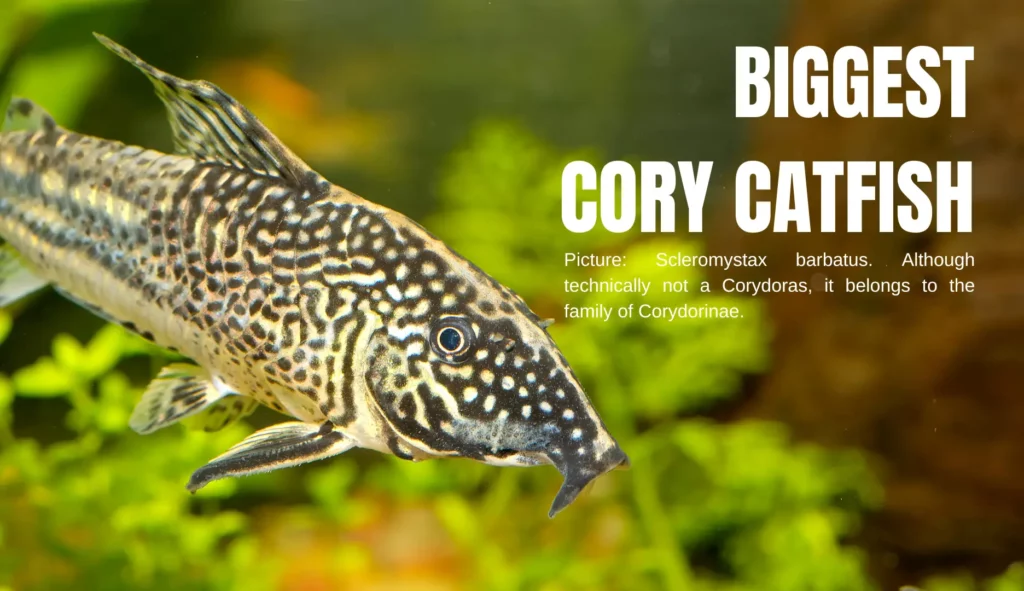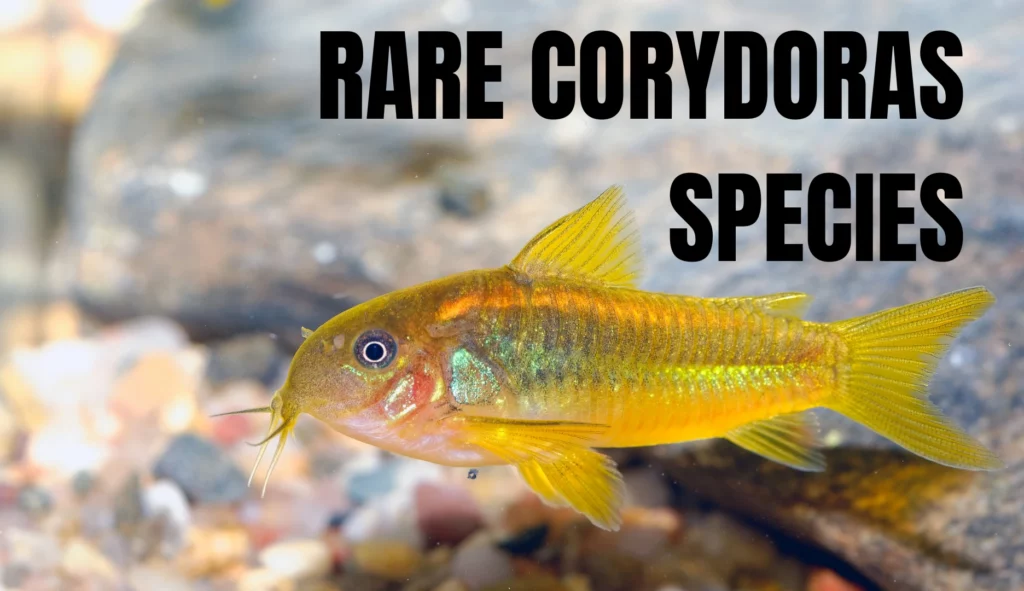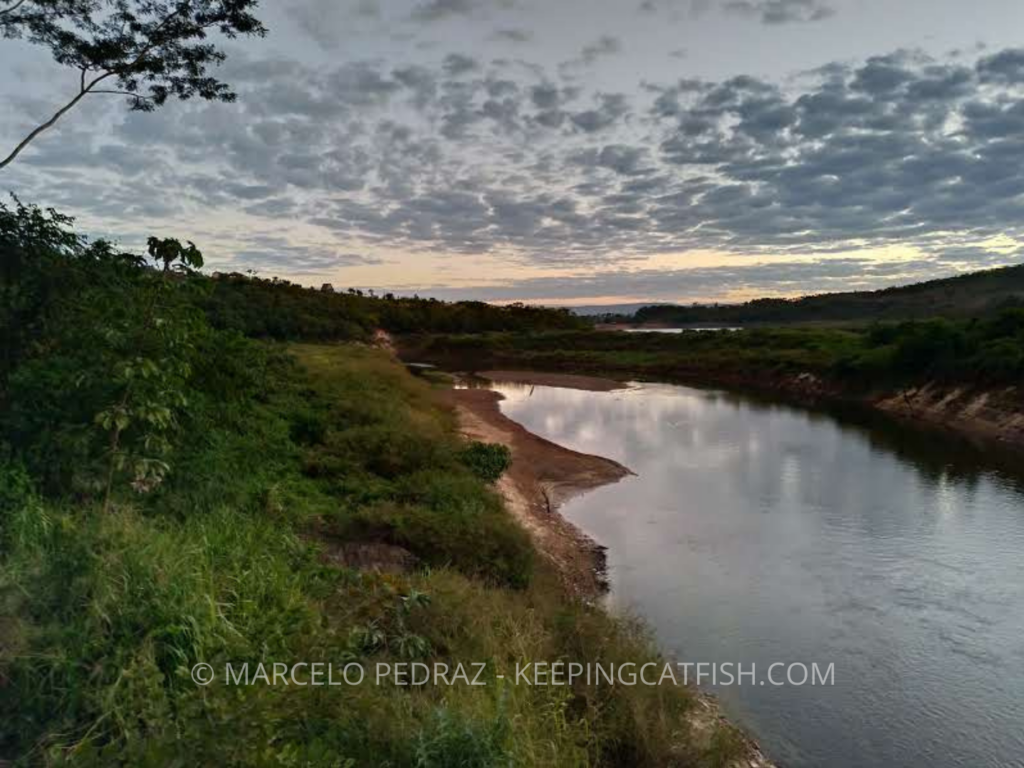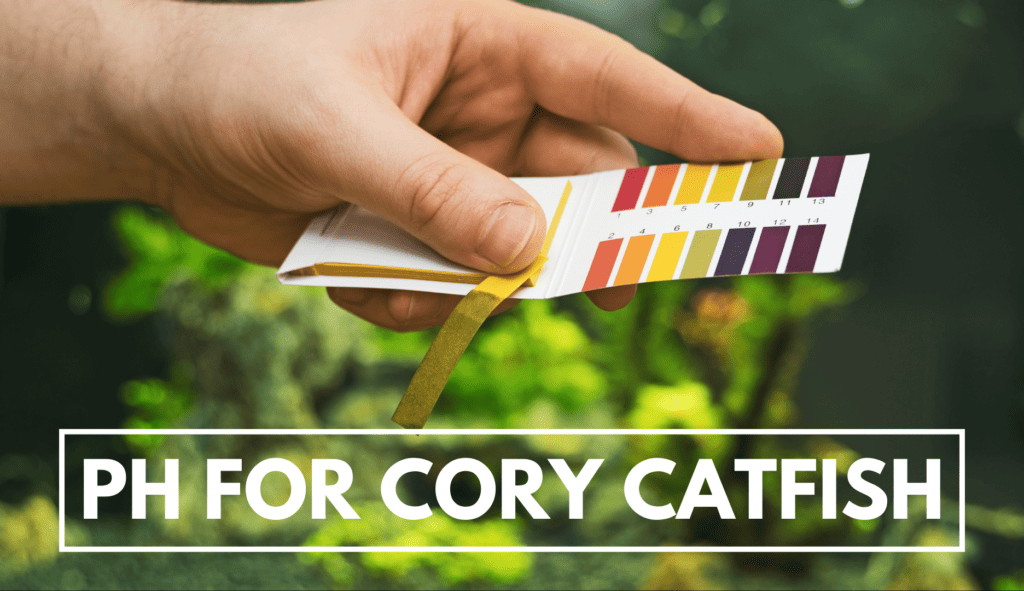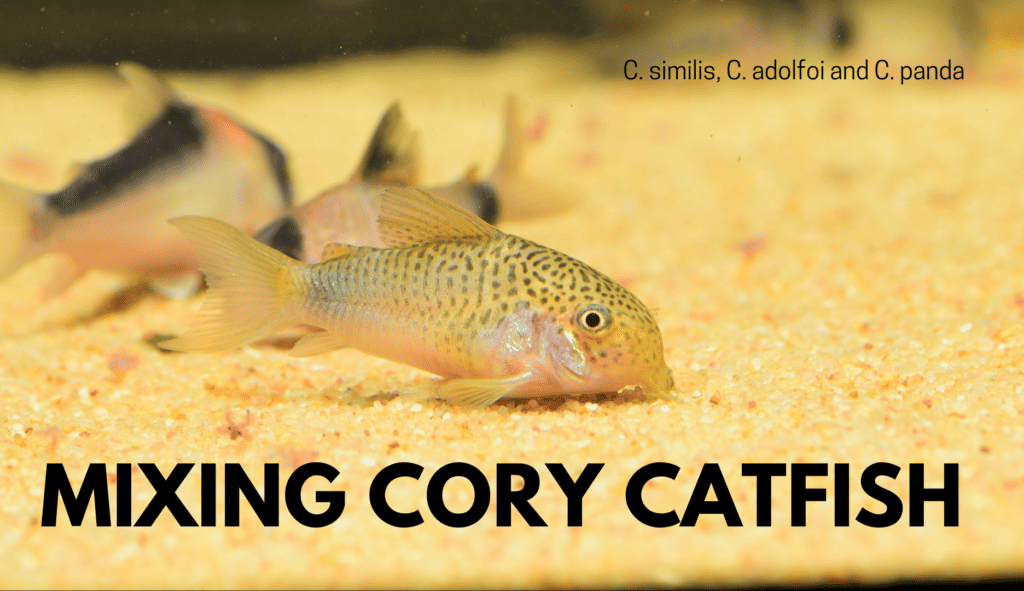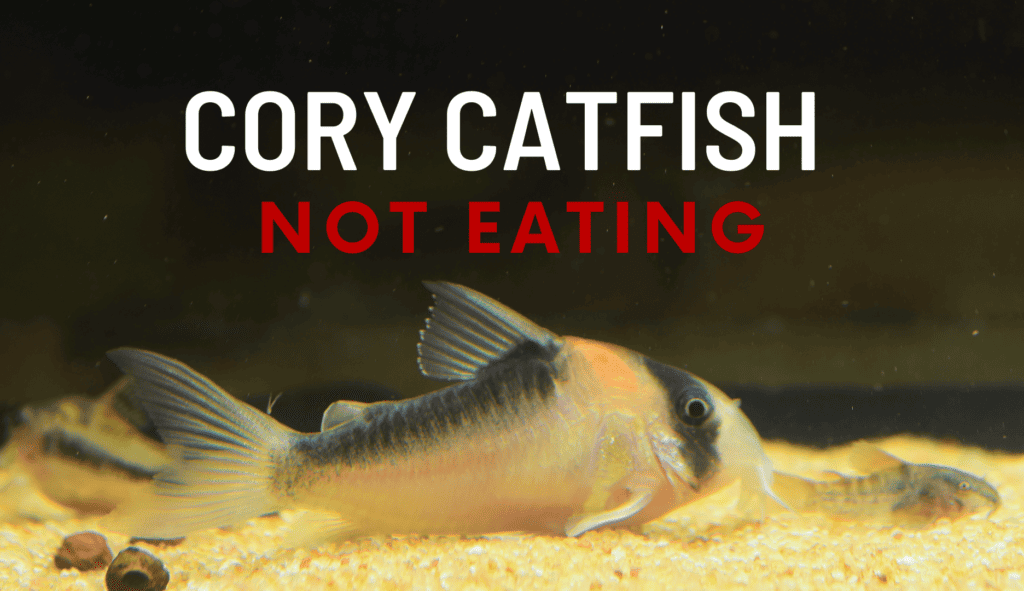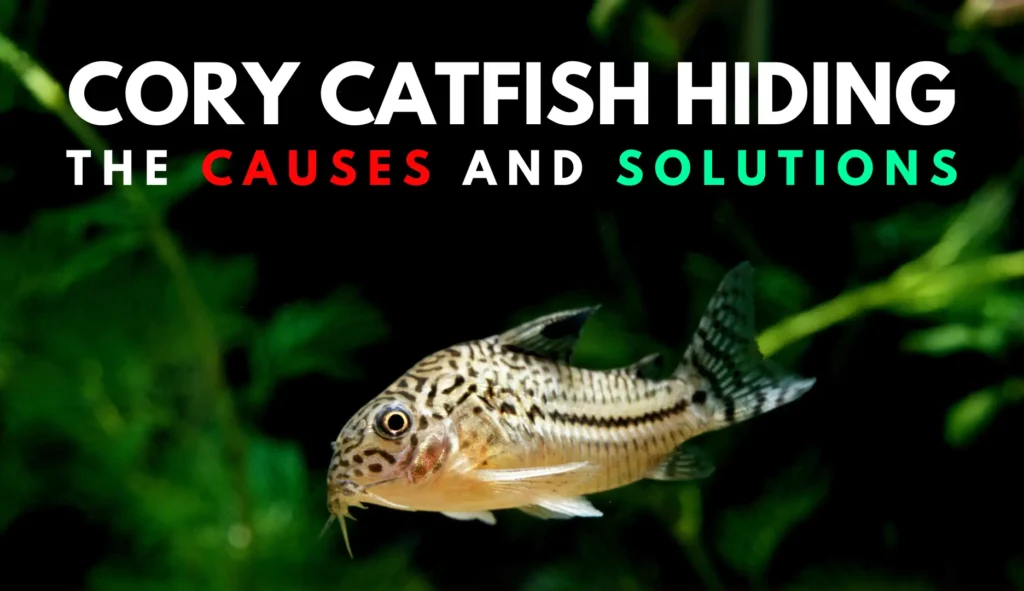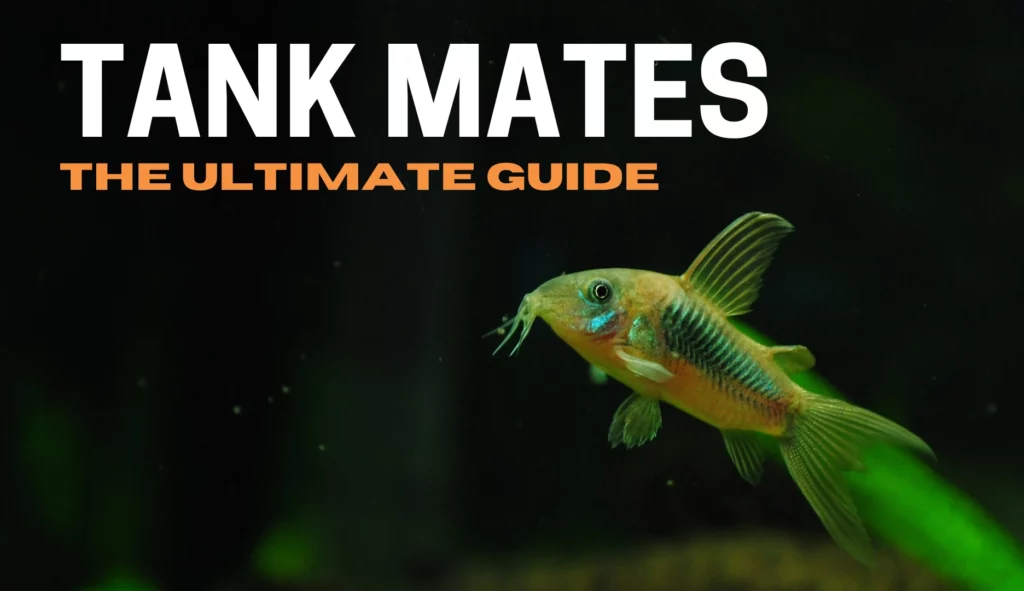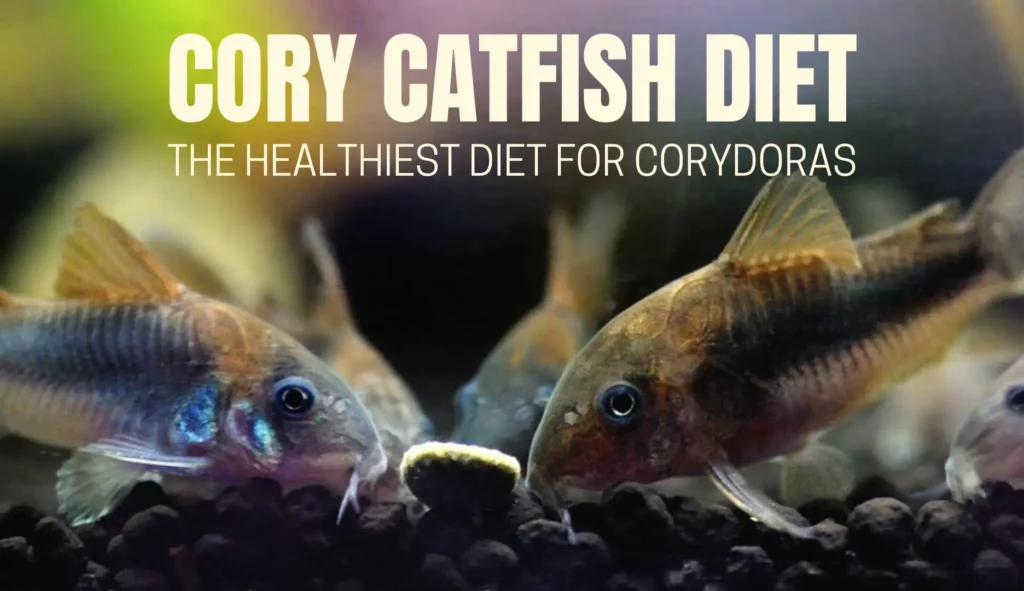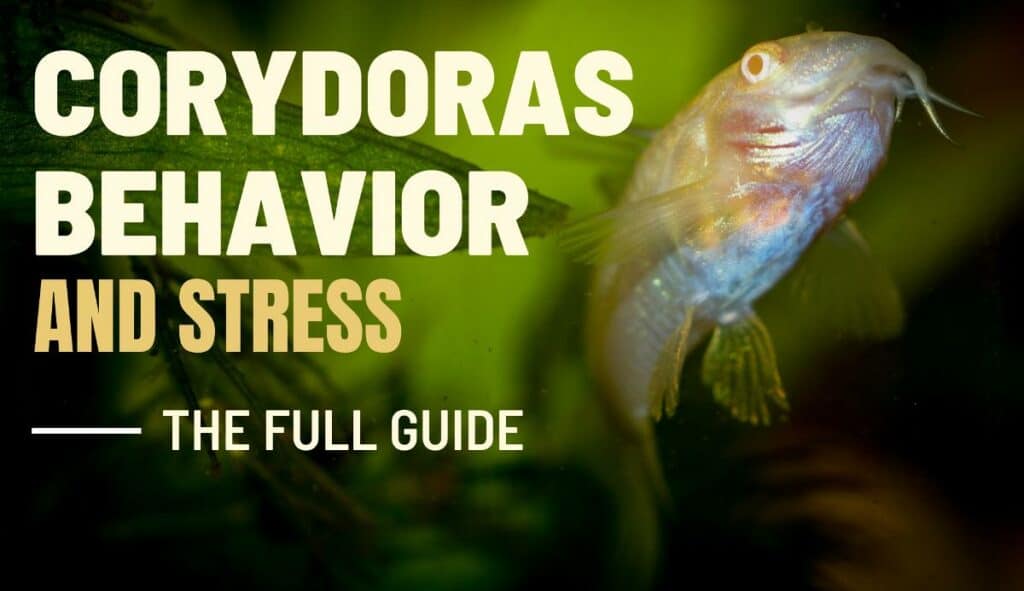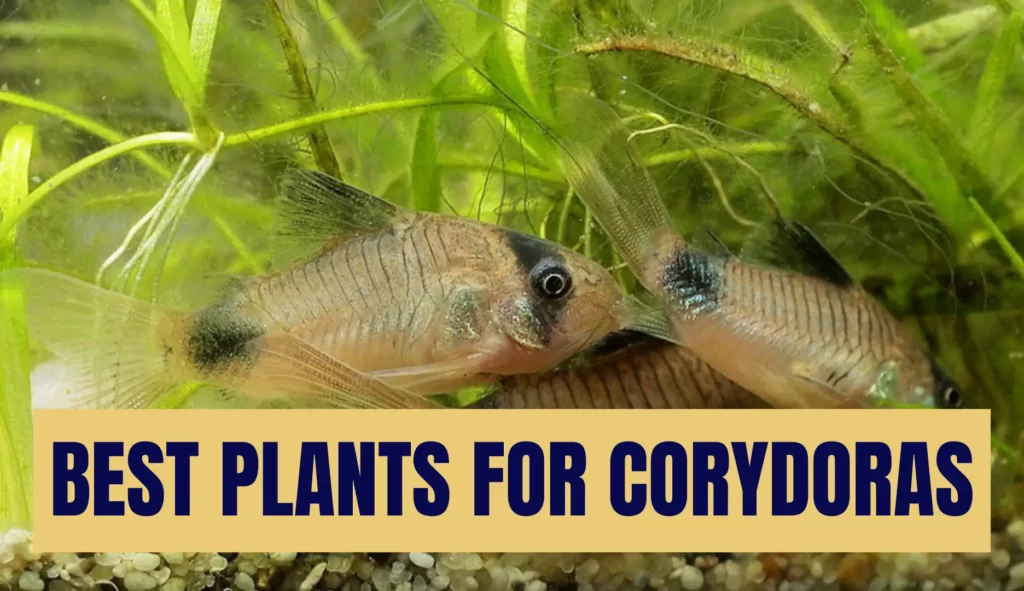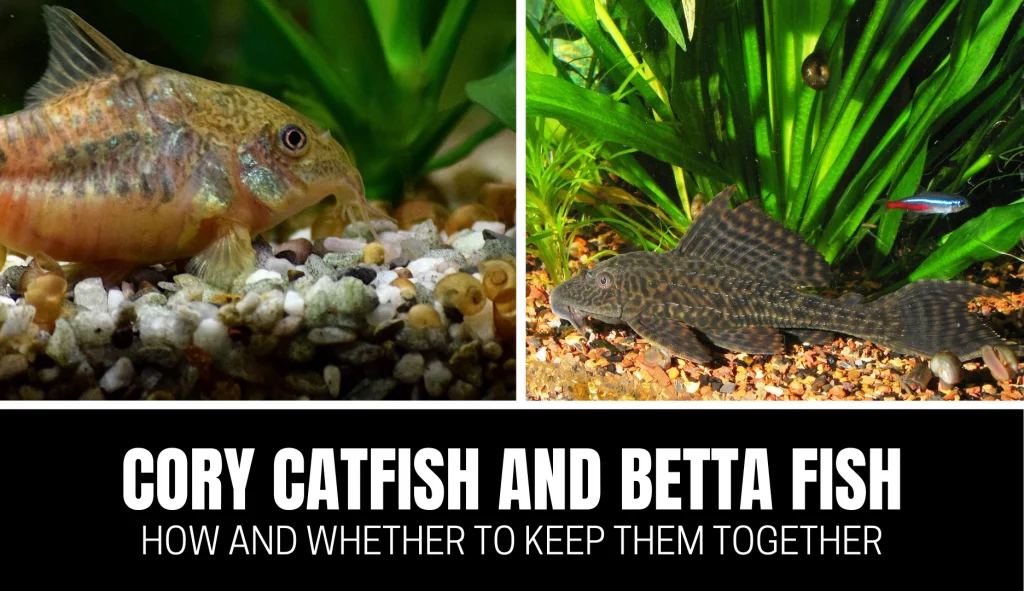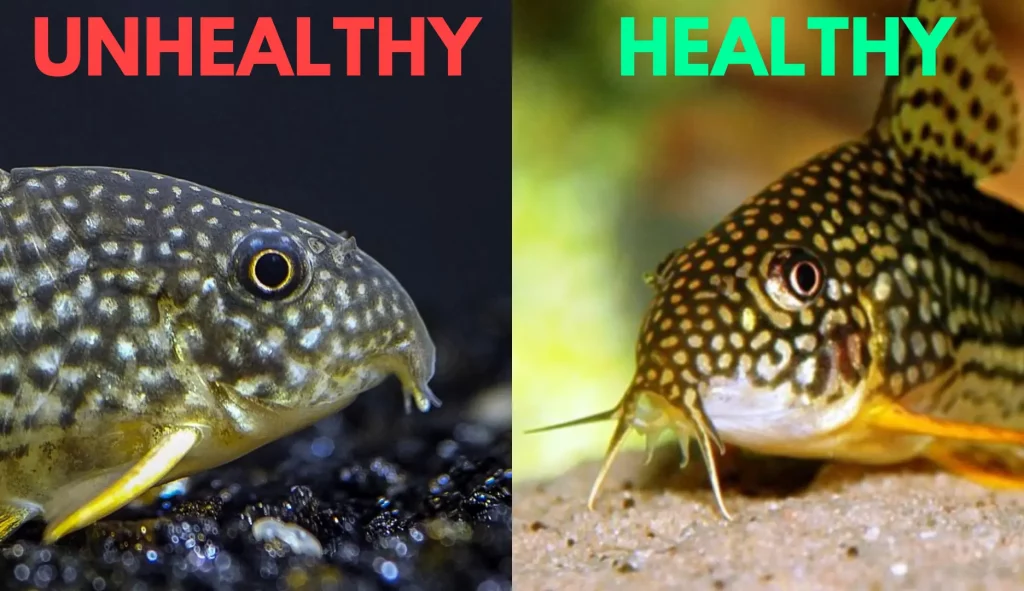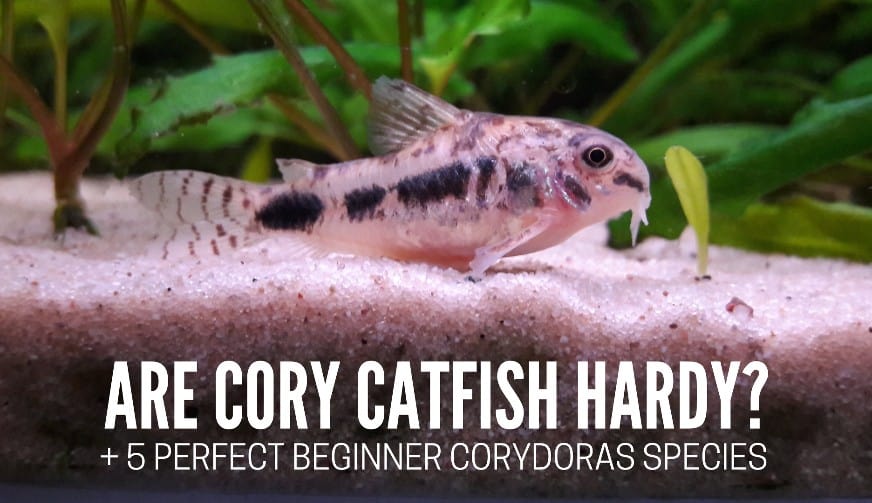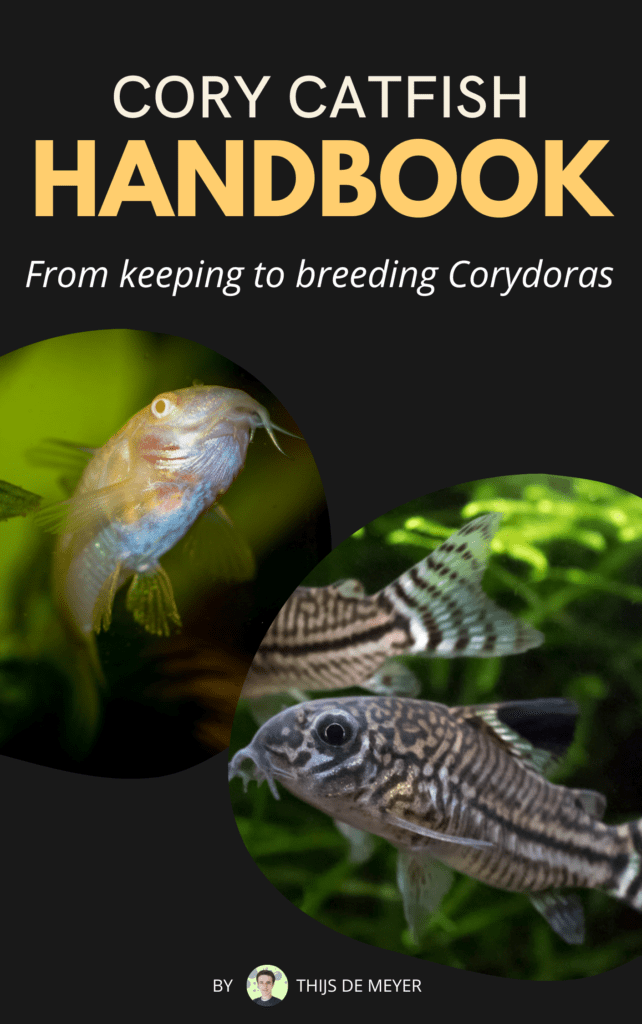Corydoras are available in a multitude of colors, patterns, and sizes. Many aquarists are unaware that some species can reach up to 5 inches (12 centimeters) in length.
This article will discuss the 5 biggest cory catfish species, exploring their distinctive characteristics, habitats, and essential tips for keeping them healthy in your aquarium.
Corydoras are diverse
Corydoras are a diverse group of freshwater fish that belong to the Callichthyidae family. These tropical catfish are native to South America, occurring in many habitats, from rivers and streams to ponds and swamps.
Corydoras are desired and known by aquarists because of their color variation, unique patterns, and peculiar behaviors.
The diversity among the more than 160 species of cory catfish is remarkable, with many sizes, behaviors, habits, and colors. There are small species that hardly exceed a few centimeters in length, even the largest ones that can reach close to 6 inches (15 centimeters).
Each species has distinct characteristics, making the aquarist exploration of this group fascinating and enjoyable for those who like these catfish.
1. Brochis splendens
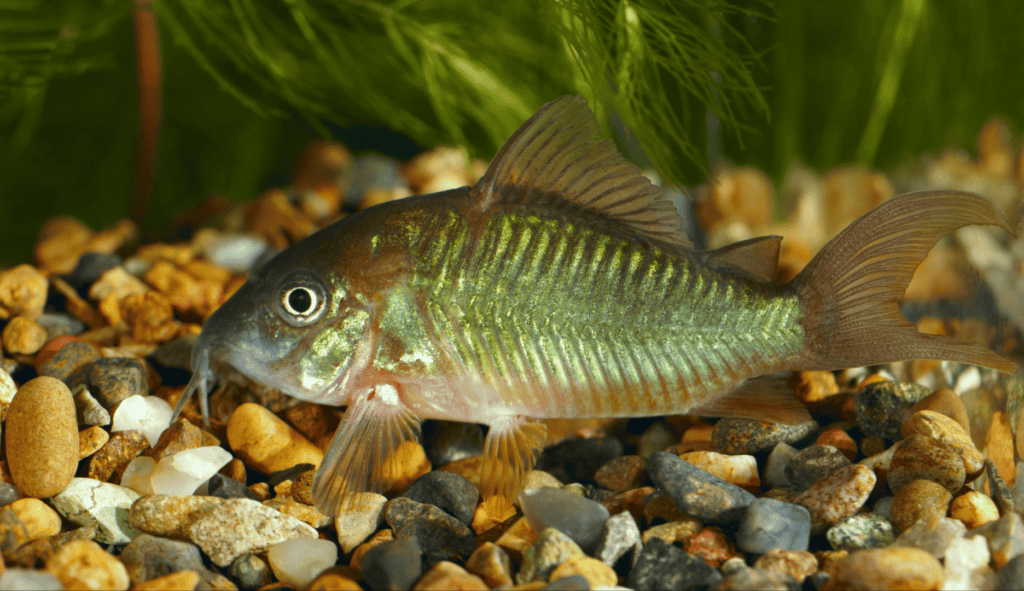
The emerald Corydoras, scientifically called Brochis splendens, is one of the largest Corydoras species.
With a size that can reach up to 5 inches (12 centimeters) in length and its iridescence, it is a fish that attracts the attention of any observer. Spread across the Amazon River basin in Brazil, Peru, Ecuador, and Colombia. It’s a fish with a wide geographic occurrence.
Care and wild habitat
Habitat and care in the aquarium
In the slow-flowing waters of its natural habitat, this cory lives in schools and scours the riverbed for food.
In terms of behavior, they are friendly and sociable fish, making them a significant choice for aquarists of all levels.
We recommend keeping a group of at least six individuals, as this reduces stress and encourages natural behaviors. The environment should be dimly lit and include hiding places and crevices for Brochis to feel safe and at ease.
By offering a varied and balanced diet with live, fresh, frozen, and superior quality foods, you ensure that the emerald cory has adequate nutrition and stays healthy.
Water quality is also critical, with parameters kept within ideal limits and regular water changes
A school of these fish in the aquarium causes a spectacular aesthetic impact. Emerald corydoras are a species with fascinating behavior, always active and interacting in the aquarium.
2. Banded cory (Scleromystax barbatus)
Banded cory is not scientifically placed in the genus Corydoras and is considered a Scleromystax, yet it is another impressive representative of the larger Corydorainae.
It can reach a size of up to 5 inches (12 centimeters). Despite the length, unlike the Brochis, they are slender and long fish.
Care and wild habitat
Originating from dark water streams on the Atlantic coast of Brazil, this species has a unique color pattern, with stripes and reticulate spots that extend across the body.
This fish inhabits diverse locations ranging from still water to fast-flowing creeks.
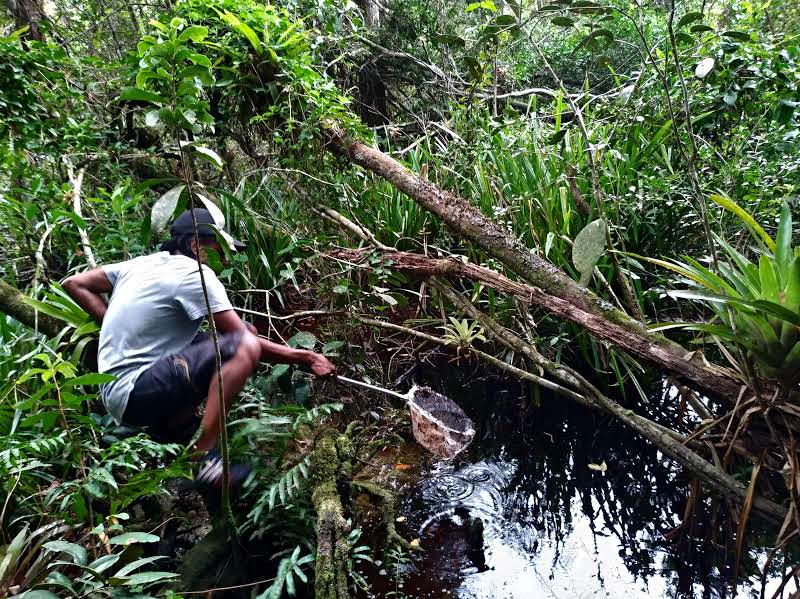
Banded cory spends most of its time looking for food among fallen leaves close to the substrate but also feeds in the column and on the water surface. This is an adaptation to the place they inhabit
In aquariums, they are a little shy and sensitive to the quality of water and environment, which must always be perfect. In terms of sociability, it is a peaceful species that lives in large schools, making it an excellent inhabitant of community aquariums.
Like other Corydoras, we should always keep a shoal of at least six individuals to promote a more natural behavior.
These fish prefer water with a milder temperature, from 18 to 25 degrees celcius, and a pH below 6.8.
When it comes to feeding, banded corys don’t always accept dry food. Most of them come from collections, and it takes a while to understand that that inert piece is your food.
A live, fresh feed of animal origin and high-quality ground feed must always be provided. Make sure your diet is balanced and contains the necessary nutrients.
3: Hognose 'Brochis' - Corydoras multiradiatus
Corydoras multiradiatus, is one of the largest representatives of the genus Corydoras, reaching up to 4.5 inches (11 centimeters).
With its striking appearance, this corydoras has a dark body color, with a lighter stripe in the upper middle part. Its body emits a strong yellowish glow when reflecting light, which gives it an elegant and distinguished look.
Care and wild habitat
When setting up an aquarium to house this cory, it is important to replicate its natural environment.
Providing a soft substrate such as sand and hiding places such as caves and areas of vegetation will allow the fish to feel safe and comfortable.
These fish are peaceful and live in groups of at least 6 individuals, which makes them excellent companions for other fish with similar characteristics. When choosing your tankmates, consider fish of similar size and characteristics.
Like other corydoras, the water must always be of excellent quality, free of pollutants and the animals receive quality food.
4. Bronze cory catfish (Corydoras aeneus)
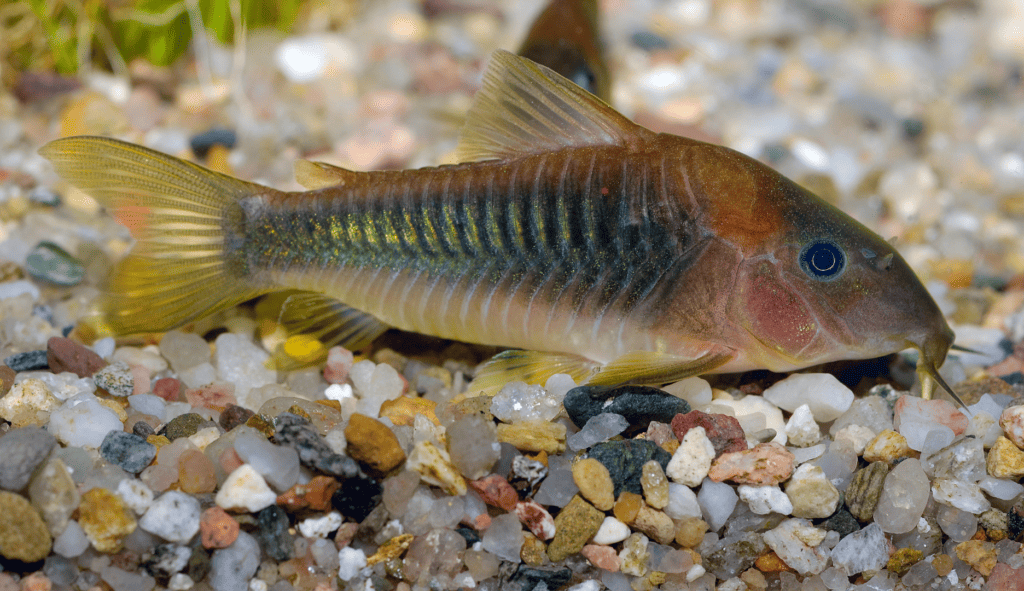
The bronze Corydoras, also known as Corydoras aeneus, is the most common corydoras species in nature and also in the aquarium world due to its unique appearance, interesting behavior, ease of reproduction, and adaptability to different aquariums. Adult animals can reach a maximum length of about 3 inches (7.5 centimeters).
One of the outstanding characteristics of bronze cory is its copper-gold coloration with a dark spot that starts just behind the gills.
The color of its body and the iridescence of its scales earned it its common name. Its flippers, like its body, have black details on the ends. They are incredibly active animals, always looking for food among the substrate particles.
Care and habitat
Bronze corydoras inhabit any type of water, with pH ranging from 6 to 7.5, temperature from 20 to 28, and low to high hardness.
When setting up an aquarium for these corydoras, it is essential to offer a soft substrate, otherwise, the barbels may degenerate.
Likewise, the substrate must always be clean and free of waste. Providing hiding places such as rocks, plants, and caves reduces stress and puts the fish at ease.
They are gregarious animals and feel more comfortable when kept in groups of six or more individuals; this practice reduces stress and promotes healthy social behaviors.
They are very peaceful and coexist without problems with other peaceful fish, which share the same water characteristics and do not see them as food.
The feeding of bronze corydoras should be varied and balanced, including different foods in its diet. Although they feed more on the substrate, they also accept food in the water column.
Make sure to keep the water parameters stable and always at ideal levels, performing periodic maintenance that involves partial changes and monitoring the parameters.
5. Peppered cory catfish (Corydoras paleatus)
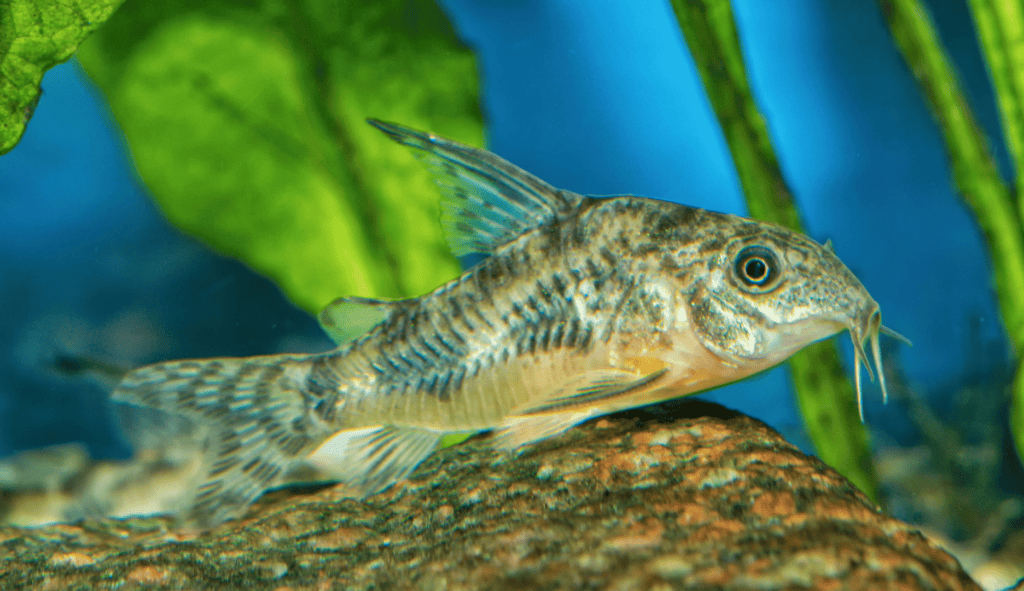
Originally from the Paraná and Uruguay river basins in Uruguay and Brazil, this species is very prevalent, inhabiting a large geographic region, in slow-flowing waters, mild temperatures, and sandy substrates.
With a maximum length of about 3 inches, it exhibits a distinctly mottled coloration, a body in the classic iridescent beige color of corydoras covered by a few black spots.
Its fins, as well as the ventral region, are yellow, almost orange, creating a striking contrast. This species is excellent for community aquariums.
Corydoras paleatus are active and very curious fish, often exploring the bottom of the aquarium in search of food. Keeping the species healthy is easy, have a group of at least 6 individuals, water free of pollutants, and with the right characteristics for the species.
As with other corydoras, soft substrate, and hiding places are necessary. Regarding socialization, pepper cory is peaceful and can be kept with species of similar behavior and size. Avoid placing them with large or aggressive fish that might intimidate them or see them as a snack.
Their food must be plentiful, of good quality, and based on animal protein.

